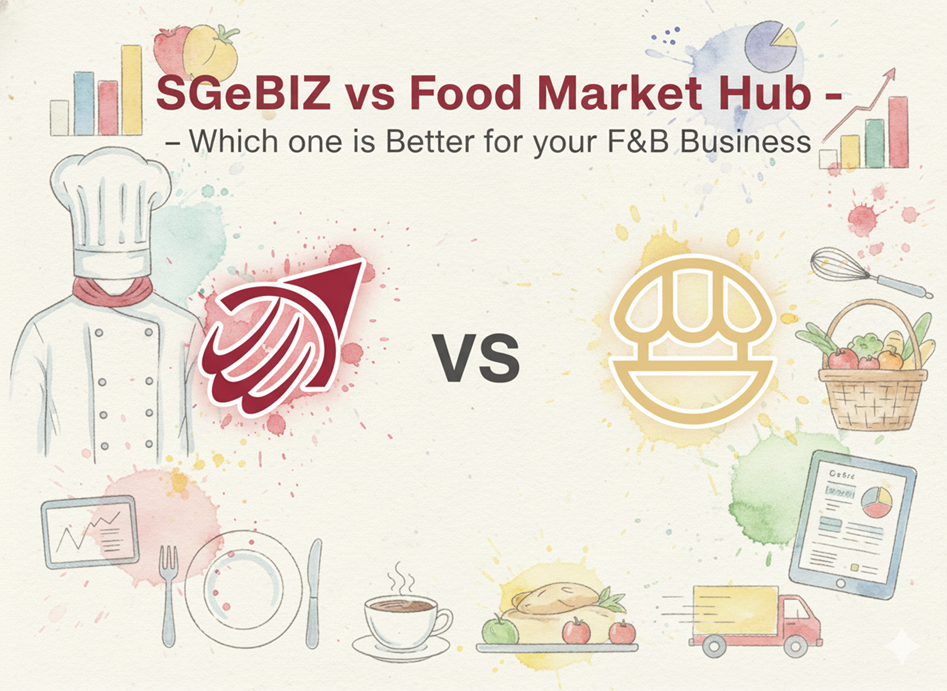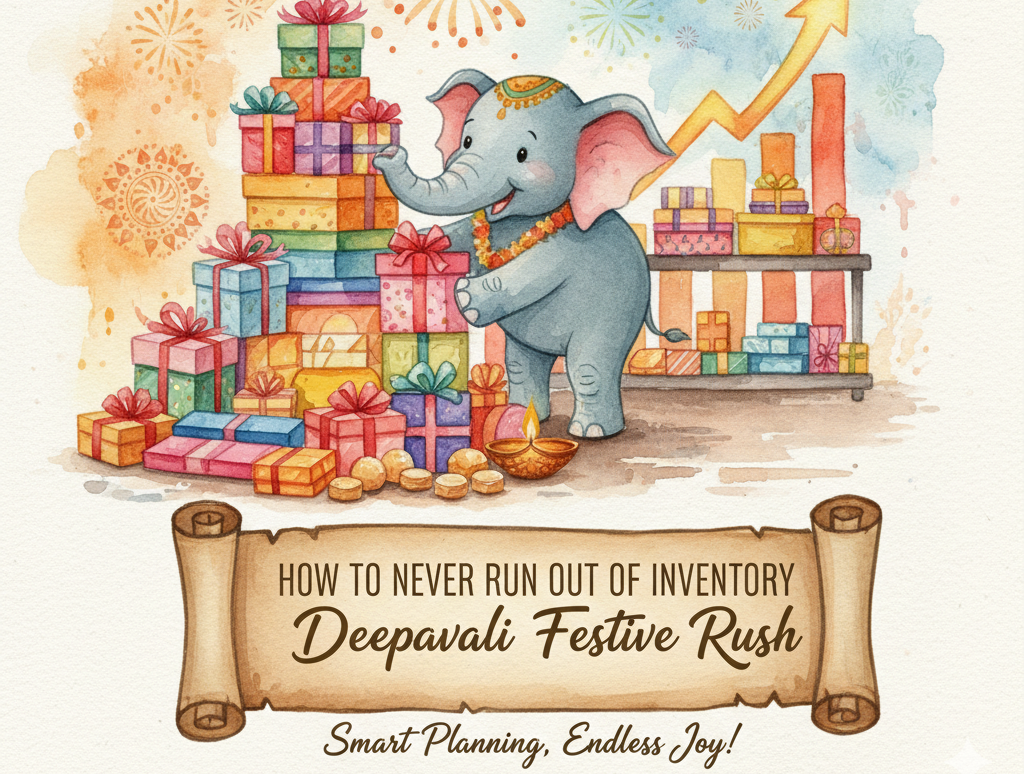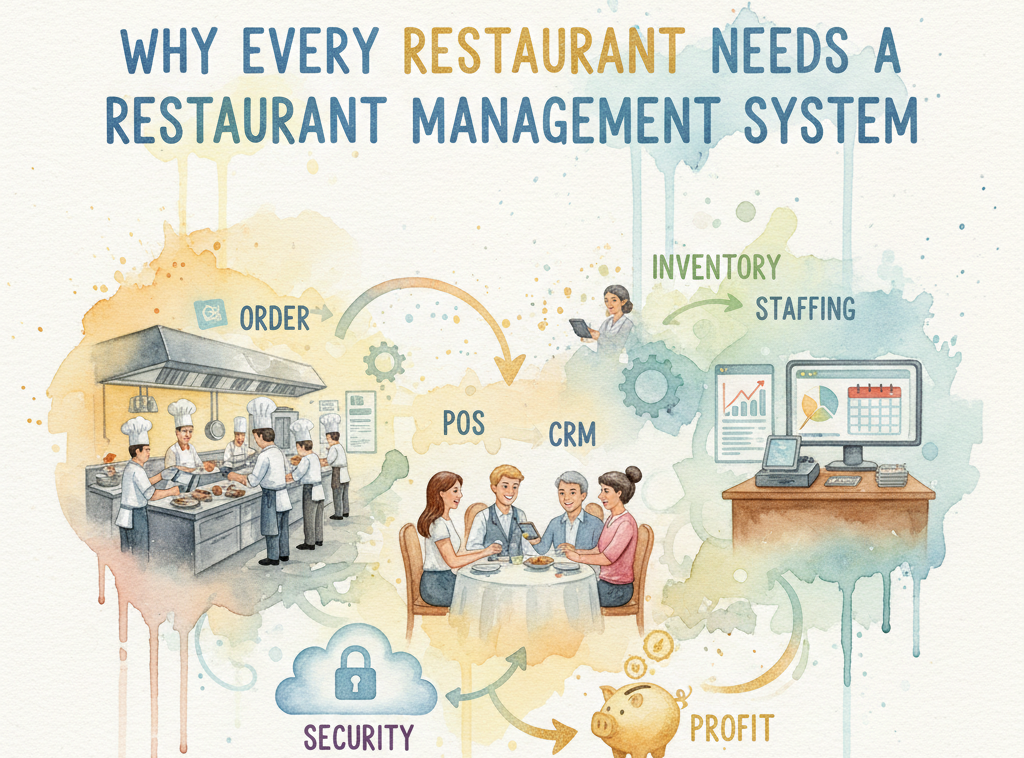The Ultimate Guide to Choosing the Best Restaurant Procurement Management Software

If you manage a food business, you know how tough it can be to keep track of orders, control costs, and reduce waste. The right procurement management system can make your life easier by automating tasks, giving you better control over spending, and helping you make smarter decisions.
But with so many options out there, how do you pick the best one? In this guide, we’ll walk you through the key features to look for in a restaurant procurement software and why Food Market Hub stands out from the rest.

Why You Need a Good Procurement Management System
The Problem with Manual Ordering
When you rely on WhatsApp messages, phone calls, and emails to place orders, things easily get lost in the shuffle. Suppliers might miss a text, you could forget to follow up on a quote, or an important email might get buried in your inbox. This disorganized approach leads to wrong orders, missing ingredients, and last-minute rushes to fix mistakes.
A proper procurement management system eliminates these headaches by giving you one central place to handle all orders. Instead of juggling multiple conversations, you can see every order, supplier response, and delivery status in a single dashboard. No more guessing whether an order was confirmed or scrambling because something wasn’t delivered.
How Poor Inventory Control Wastes Money
Studies from the Food and Agriculture Organization show that restaurants waste nearly 10% of the food they purchase due to poor inventory tracking. Without a clear system, you might overorder perishable items that spoil before use or underestimate demand and run out of key ingredients during peak hours. Both scenarios hurt your profits—either through unnecessary waste or lost sales.
A smart procurement system helps you track stock levels in real time, so you always know what you have and what you need. It can alert you when supplies are running low and even suggest optimal order quantities based on past usage. This means less food in the trash and more money staying in your business.
The Hidden Costs of Disorganized Procurement
When orders are scattered across different platforms, you lose visibility into spending. You might not notice when a supplier increases prices, or you could end up paying for duplicate orders. Without proper records, it’s hard to analyze where your money is going or identify areas where you could cut costs.
A good procurement management system keeps detailed records of every transaction, including price history and order frequency. This makes it easy to spot trends, compare supplier costs, and negotiate better deals. Over time, these small savings add up, improving your overall profitability.

Time Savings Lead to Better Operations
Manually handling orders takes hours each week, time that could be spent on more important tasks like improving service, creating new dishes, or training staff. A procurement system automates routine tasks, from generating purchase orders to tracking deliveries, freeing you up to focus on growing your business.
With features like automated reminders and order templates, you can reduce the time spent on repetitive tasks while ensuring nothing falls through the cracks. The result is a smoother, more efficient operation where you spend less time on paperwork and more time serving customers.
Better Decision-Making with Data
Without accurate data, it’s hard to know which dishes are most profitable or which ingredients are driving up costs. A procurement system provides reports that break down expenses, track waste, and calculate the true cost of each menu item.
With this information, you can make smarter choices, like adjusting portion sizes, swapping out expensive ingredients, or promoting high-margin dishes. Over time, these data-driven decisions help you optimize your menu and increase profits without raising prices.
By implementing a strong procurement management system, you gain control over ordering, reduce waste, save time, and make better financial decisions—all of which contribute to a healthier, more sustainable business.
Must-Have Features in a Restaurant Procurement Software
A Single Dashboard for All Orders
Managing orders through multiple channels like WhatsApp, email, and phone calls creates chaos. You might forget an order, misplace a message, or end up with duplicate requests. This disorganized way of working leads to mistakes, delays, and frustration.
A strong procurement management system should bring all your orders together in one place. Food Market Hub gives you a single dashboard where you can place, track, and manage every order without switching between apps. No more missed messages or wrong quantities—just smooth, error-free ordering.
Detailed Reports to Track Costs and Waste
Running a food business means keeping a close eye on expenses. Without proper tracking, you could be losing money without even realizing it. A good system should provide clear reports that help you make better decisions.
Food Market Hub gives you insights into food wastage, showing which ingredients are being thrown away most often. This helps you adjust orders and reduce unnecessary spending. The Cost of Goods Sold (COGS) report breaks down how much each dish costs to prepare, so you can focus on the most profitable items. The purchase price history report tracks ingredient costs over time, helping you spot price increases and negotiate better deals.

Smart Inventory Alerts with Two PAR Levels
Inventory management is tricky—too much stock leads to waste, and too little means running out during busy times. Most systems only allow one PAR level, which doesn’t account for fluctuations in demand.
Food Market Hub solves this with two PAR levels—one for regular days and another for peak periods. This means you’ll get alerts based on actual needs, not just a fixed number. If weekends are busier, the system will remind you to stock up accordingly. No more last-minute panic orders or excess spoilage.
Supplier Price Comparison
Ingredient prices change frequently, and without tracking, you might not notice when costs creep up. A good procurement management tool should help you compare supplier prices easily.
Food Market Hub keeps a history of past orders, so you can see how prices have changed over time. If one supplier suddenly increases costs, you’ll know immediately and can switch to a better option. This ensures you always get fair prices and avoid overspending.
Easy Integration with Your Existing Tools
You likely already use software for accounting, point-of-sale (POS), or inventory management. A new system should work seamlessly with what you already have, rather than forcing you to start from scratch.
Food Market Hub integrates with popular tools, so you don’t have to manually transfer data between systems. This saves time, reduces errors, and keeps all your business operations connected. Whether it’s syncing stock levels with your POS or exporting expense reports to your accounting software, everything flows smoothly.
By choosing a system with these features, you’ll have better control over orders, costs, and inventory, making your daily operations much simpler and more efficient.
Why Food Market Hub is Different
Centralized Order Management
Most restaurant operators struggle with orders scattered across WhatsApp, emails, and phone calls. Food Market Hub eliminates this chaos by providing a single platform where all ordering happens. Suppliers receive orders digitally, confirmations are tracked automatically, and you get real-time updates on deliveries - all without switching between apps or chasing suppliers for responses.
Actionable Business Insights
While basic systems might show simple inventory levels, Food Market Hub delivers powerful analytics. You'll see exactly which ingredients contribute most to waste, which menu items have the best profit margins, and how supplier prices fluctuate over time. These insights help you make decisions that directly improve profitability, like adjusting portion sizes or negotiating better deals with vendors.

Intelligent Inventory Control
Unlike systems with rigid stock alerts, Food Market Hub's dual PAR level system adapts to your actual business patterns. It learns your busy periods and automatically adjusts inventory recommendations. Whether it's a weekend rush or a seasonal promotion, you'll maintain optimal stock levels without manual guesswork or emergency orders.
Transparent Pricing History
The platform maintains complete records of all past purchases, creating a clear pricing timeline for every ingredient. You can instantly see if a supplier raises prices unexpectedly, compare costs between vendors, and identify seasonal price trends. This transparency puts you in control of food costs and strengthens your negotiating position with suppliers.
By combining these advanced features in one intuitive system, Food Market Hub provides tools that grow with your business needs rather than just handling basic procurement tasks. The result is smarter purchasing decisions, reduced operational stress, and measurable cost savings over time.
Choosing the right procurement management system can transform how you handle orders, control costs, and reduce waste. Food Market Hub offers features that most other systems don’t—like dual PAR levels, detailed cost reports, and a single dashboard for all orders.
If you want to save time, cut waste, and boost profits, it’s time to switch to a smarter way of managing procurement. Try Food Market Hub today and see the difference for yourself!










